Algerian Food Dishes: Basic Overview
Common Ingredients
Common Cooking Methods
Courses
Meals
Key Taste
Eating Etiquette
Meal Presentation
Culinary Festivals
Influence and Fusion
Popular Types of Algerian Dishes
-
Bread and doughs
Bread is the cornerstone of Algerian cuisine and is present at every meal.
Algerian flatbread, with a pancake-like appearance, is a popular side dish that often serves as a utensil for scooping up food.
Most kinds of bread have a neutral flavor, but sweet bread is also popular.
Baking and pan-frying are popular ways of preparing bread in Algeria.
-
Soups and Stews
Aromatic soups and stews make up a significant proportion of Algerian dishes.
These food offerings are hearty and savory items for the main course.
These dishes are typically prepared with vegetables, legumes, meat, and many herbs and spices.
Many soups and stews are prepared with traditional cookware made of clay that traps moisture and helps reduce the amount of water used.
-
Snacks
Snacks in Algeria are mainly pastries made from wheat flour.
These snacks come in many sizes and can sometimes have a rich filling.
Many snacks are also breakfast dishes and street food offerings.
Such dishes are convenient to eat and can be consumed on any occasion.
-
Desserts
Many Algerian desserts are cakes and pastries infused with spices and aromatics.
These desserts usually have a crispy or flaky texture.
Nuts and dried fruits are popular ingredients for making sweet desserts in Algeria.
Desserts are an important part of celebrations in Algeria.
Algerian dishes are specialties widely prepared and enjoyed in Algeria, a North African country in the Maghreb region.
These dishes are a mix of native Berber and Arab cooking traditions with other influences, especially French specialties and Ottoman dishes, the latter represented by Turkish delicacies.
Many popular Algerian dishes are prepared with semolina (coarsely milled durum wheat flour), halal meat, fish, vegetables, and, most importantly, spices. The liberal use of spices gives Algerian food robust flavors and alluring aromas.
I will present more interesting facts about traditional Algerian food, such as its core features, international popularity, and healthy aspects.
Next, I will cover the 24 most well-known dishes in Algeria before describing what makes Algerian cuisine special and suggesting beverages to enjoy with local dishes.
24 Amazing Algerian Dishes
I’m going to give you a tour of 24 dishes that you should pay attention to. Advanced filters like alphabetical sorting, main ingredients, taste, cooking methods, dish types, courses, and global popularity will guide you through this content more easily.
In addition, there are filters based on specific culinary styles, such as traditional, national, street food, fusion, exotic, and vegetarian options. Use them to improve your reading experience.
Couscous
- National
- Traditional
Couscous is a classic Algerian dish made from steamed semolina. It comes in the form of small, golden spherical grains that have a light, fluffy texture and nutty flavor when cooked.
As a healthy, nutritious staple dish, couscous goes well with many kinds of food, such as vegetables, meat stews, buttermilk, etc. Algerians usually eat it on Friday at home after joining in midday prayers at mosques, as well as at funerals.
Couscous dates back to old Berber traditions and is also popular throughout the Maghreb.
Chorba Frik
- Traditional
Chorba frik is a light yet delicious soup that Algerians usually prepare during Ramadan. “Chorba” means “soup” in Arabic, and “frik” (or freekh) is a type of cereal food made from roasted green durum wheat.
Besides its namesake ingredients, chorba frik contains tomatoes, beans, spices, vegetables, and occasionally lamb or beef. After a whole day of fasting, people usually eat this beautifully green soup as an appetizer before richer dishes, especially in the northern and eastern regions.
Chorba frik was brought to Algeria in the 17th century when it was part of the Ottoman Empire under the name of the Regency of Algiers. This soup was originally a favorite dish in the Ottoman army before gaining popularity with the local population.
M’semen
- Traditional
M’semen is a beloved flatbread in Algerian and other Maghreb countries. It is made with simple ingredients like semolina, flour, butter, and water.
To make m’semen, people create a smooth dough with the ingredients, divide the dough into smaller parts, then knead and roll the pieces into paper-thin circles. The next step is to masterfully fold each circle into a square pancake.
M’semen is sometimes stuffed with minced meat and vegetables before being fried in oil until crisp and golden, creating a delicious snack to serve with coffee and mint tea.
Tajine
- Traditional
Tajine, also known as tagine, is a rich and savory meat stew widely enjoyed in Algeria and throughout North Africa. It is named after the earthenware pot used to prepare the stew.
There are two main types of tajine in Algeria: tajine zitoune (prepared with chicken and olives) and tajine jelbana (made with beef or lamb). Both versions also include various vegetables, such as onions, tomatoes, potatoes, and artichokes.
Tajine is a comforting main dish suitable for communal meals. People regularly serve it with bread with bread to scoop up the rich sauce.
Bourek
- Street Food
- Traditional
Bourek, also known as brik, is an iconic meat-stuffed puff pastry dish in Algerian cuisine. Usually enjoyed as a snack or appetizer, it is a local adaptation of börek (burek) found in Ottoman cuisine.
A typical bourek has a baked or fried dough with thin, flaky layers. The dough base is sprinkled with sesame seeds and traditionally stuffed with potatoes, spices, and minced lamb or beef.
However, wandering through Algerian streets, you will have no difficulty finding vendors selling Bourek stuffed with seafood or cheese. Bite on its crisp, flaky crust, and this pastry snack will reveal a crunchy sensation and a truly savory taste.
Harira
- Traditional
Harira is an Algerian tomato soup beloved throughout the country, especially in the western region. It is typically served during Ramadan with bread, dates, cookies, or light drinks as a popular option to break the fast.
This tomato soup also features lamb or beef, legumes, vegetables, and spices. While the ingredient list varies from one region to another, using a large number of spices is a must, with cinnamon, ginger, pepper, and turmeric being ideal choices.
Outside Algeria, harira is one of Morocco’s cultural foods.
Mahdjouba
- Street Food
Mahdjouba, also known as mhadjeb, is a popular flatbread street food that Algerians either eat on its own or with harissa, a hot chili pepper relish. Hailing from the Berber culinary tradition, it is widely available in local markets and street food stalls.
Mahdjouba is based on a dough made with semolina and olive oil. The dough is stretched very thinly before being folded over a filling of spiced tomatoes, onions, and peppers before being pan-fried.
Baghrir
- Traditional
Baghrir is a renowned Algerian sweet pancake with a honeycomb-like appearance, hence its nickname “thousand-hole pancake.” Its main ingredients are just semolina or fine wheat flour and yeast.
To make this Algerian pancake shine, locals drizzle it with a mixture of butter and honey. The spongy surface absorbs every bit of the sauce, giving it a pleasantly sweet and fruity flavor.
Many Algerians usually eat baghrir as a healthy snack or breakfast dish on regular days as well as during Ramadan.
Shakshouka
- Traditional
Shakshouka, also known as chakchouka, is a sought-after dish in the Algerian culinary landscape. While it is more broadly associated with North African and Middle Eastern cuisines, the Algerian version is perfect in many ways.
The magic of shakshouka lies in the spectacular combination of nutty, buttery eggs with a flavorful sauce of tomatoes, other vegetables, and spices. Some people even incorporate lamb mince or yogurt into the dish for added flavor.
While shakshouka is widely considered a breakfast dish, it goes well with bread for lunch and dinner, too.
Kesra
- Traditional
Kesra is a rustic Algerian flatbread made with semolina dough and high-quality olive oil. It has a round shape and comes in various sizes.
With a dense, hearty texture and a slightly nutty flavor, kesra is an excellent accompaniment to numerous Algerian stews and soups.
There are many different names for kesra in Algeria, such as khobz ftir in Algiers, the capital city, and aghroum akoran in the Kabyle region north of the country.
Dolma
- Traditional
Dolma refers to a family of stuffed vegetable dishes widely enjoyed by Algerians, who learned how to prepare these dishes from the Ottoman Empire. Dolma is a healthy and convenient dish for locals during holidays and the holy days of Ramadan.
Many dolma varieties involve stuffing whole vegetables, such as bell peppers, with a spiced mixture of minced meat or seafood and rice. Others are prepared by wrapping grapevine or cabbage leaves around the filling.
Dolmas are usually cooked in a flavorful and tangy broth and can be served hot or cold with bread and lemon wedges.
Chakhchoukha
- Traditional
Chakhchoukha, literally “torn flatbread,” is a traditional Algerian dish created by the Chaoui people in the mountainous Aurès region in the country’s eastern part.
Chakhchoukha consists of rougag (flatbread) topped with marqa (the stew). Rougag refers to torn pieces of semolina-based flatbread, while marqa is a combination of diced lamb, chopped vegetables, and a generous amount of spices.
The Chaoui people came up with chakhchoukha as a nourishing dish to cope with the cold nights of Algeria. Nowadays, this bread-based dish is a popular choice for festivities or special occasions.
Qalb el Louz
- Traditional
Qalb el louz, literally “heart of almonds,” is a well-known dessert for both regular and Ramadan meals in Algeria. Essentially, it is a dense, syrup-soaked, diamond-shaped cake with a chewy texture on the inside with a slightly crisp exterior.
Qalb el louz is a holy trinity of almonds, semolina, and honey syrup, while a drizzle of aromatic rose water and orange blossom make a divine addition. Believe me when I say that the sweet and nutty taste of the cake is truly a taste of paradise.
Ma’quda
- Street Food
Ma’quda, also known as maaquoda or maakouda, is a favorite type of potato fritter in Algeria and other Maghrebi countries. Despite being a simple dish, it is a versatile snack or appetizer for all occasions, especially Ramadan.
Locals prepare ma’quda by mashing boiled potatoes with butter, flour, garlic, and seasonings before deep-frying the batter in oil. Many savory versions add meat, tuna, or cheese to the filling.
Chtitha Batata
- Traditional
Chtitha batata is a traditional and inexpensive stew in Algerian cuisine. People make it by stir-frying potato cubes and stewing them in a tangy sauce made from mashed or pureed tomatoes, onions, chickpeas, and herbs.
This potato-based stew became popular in Algeria in the 16th century when tomatoes and potatoes were introduced to the country. Since then, chtitha batata has been a comforting side dish to go with bread and fish or meat dishes.
Kefta
- Traditional
Kefta, also known as kofta, refers to meatballs in Algeria. Its preparation involves shaping spiced ground meat into balls and patties before grilling, frying, or baking the balls.
Algerians usually flavor their meatballs with ras el hanout, a Maghrebi blend of extremely potent spices. In addition, they only use halal-certified meat, usually beef or lamb, to prepare kefta, which is served in sweet tomato sauce.
While the best accompaniment for kefta is couscous, stuffing bread with savory meatballs as a sandwich is also an excellent idea.
Tamina
- Traditional
Tamina is a famous Algerian dessert made with slightly roasted semolina, butter, and honey. The ingredients are cooked until they become a thick, paste-like mixture that can be topped with ground cinnamon, hazelnuts, or almonds.
Locals usually prepare tamina to celebrate the birth of newborn babies and religious festivals, such as Mawlid, the birthday of Prophet Mohammad.
Rechta
- National
- Traditional
Rechta is a well-known Algerian noodle dish. It features handmade thin noodles that are cooked in a broth consisting of fried chicken pieces, oil, chickpeas, onions, potatoes, and spices.
Rechta is a popular option to serve for lunch or family gatherings and special occasions, such as weddings. This Algerian noodle soup is convenient to eat and easy to find across the country.
Tli Tli B’djedj
- Traditional
Tli tli b’djedj, also known as tlitli, is a beloved pasta dish in Algeria. It consists of pasta grains, which resemble large couscous or small pasta shapes, chicken, and a flavorful sauce.
An essential part of tli tli b’djedj is a sauce made by sautéing tomato puree with butter, onions, and aromatic spices. This sauce is drizzled over boiled pasta before hard-boiled eggs and chicken are added to the top to complete the dish.
Serve a bowl of water-mouthing tli tli b’djedj with couscous or salads, and the combo of spicy, savory, and creamy flavors will send your taste buds into hyperdrive.
Coca Algerienne
- Traditional
Coca Algerienne, literally “Algerian turnover,” is a popular Algerian snack or appetizer for Ramadan and social gatherings. Originally a Catalonian dish, it made its way to Algerian households during the colonial period.
A typical coca Algerienne features a flaky pastry filled with a mix of bell peppers, onions, tomatoes, garlic, and spices, all sauteed with olive oil. This plant-based filling makes the Algerian turnover a wonderful dish for vegetarians.
Mbesses
- Traditional
Mbesses, also known as khobz mbesses, is a classic semolina cake in Algerian cuisine. It goes well with mint tea, especially during the afternoon, religious holidays, and special celebrations.
People make mbesses from fine semolina, eggs, yeast, milk, honey, and butter. When the cake comes out of the oven, it will be drizzled with a syrup of sweet honey, tangy orange juice, and fragrant rose water to turn into a delicious dessert.
Makroudh
- Traditional
Makroudh, also known as makrout or makroud, is a toothsome cookie in Algeria and throughout the Maghreb. It is typically served at the Eid al-Fitr celebration, along with many other sweets.
Makroudh consists of a baked or deep-fried semolina crust that is filled with almond or date paste and coated with honey syrup. The almond-based filling is a distinct feature of the Algerian version.
Zviti
- Traditional
Zviti is a very spicy Algerian dish made from many pieces of semolina dough cooked with a lot of peppers. Some versions add potato taste and green olives to balance the spiciness.
Zviti hails from the town of Bou Saada, which is about 155 miles south of the capital city, Algiers. This super hot dish is traditionally served in a long wooden mortar called mehrez, hence its other name slata mehrez.
Dobara
- Traditional
Dobara is a spicy Algerian soup originating from the Biskra region in the northeastern part. Also known as dobara Biskra, it is an ideal dish for cold winter nights.
The main ingredients of dobara are chickpeas or fava beans or both, which are soaked in water and stewed until they are absolutely tender. Next, people add tomato paste, onions, herbs, and a great amount of chili pepper and other spices to the pot.
Dobara is a comforting soup that registers the Mediterranean influence on Algerian cuisine. I will highlight other interesting traits of local cuisine in the next section.
What Is Special About Algerian Cuisine?
On the shores of the Maghreb, steeped in rich history, lies Algeria, a country with amazing food. Here is what you should know about local dishes.
Algeria has a long history of invasions, cultural exchanges, and trade, which have significantly enriched its cuisine. The native Berber, Arab, Ottoman (Turkish), and French culinary traditions are among the most prominent factors that shape the local food landscape.
Many Algerian dishes have inspired or been inspired by the food offerings of neighboring Maghreb countries, such as Tunisia and Morocco. Mediterranean cuisine also has a considerable influence on local cuisine.
There are many kinds of terrain in Algeria, from the Sahara desert and mountainous regions to fertile lands and coastal areas along the Mediterranean. These conditions contribute to a diverse range of food practices and ingredients.
For example, coastal regions have a higher emphasis on seafood, while inland and desert areas rely more on meats, grains, and dates.
As the predominant religion in Algeria, Islam has significantly shaped the cuisine in terms of dietary laws and religious celebrations.
Halal food practices dictate the preparation and types of meat consumed, which specifically exclude pork. Meanwhile, Ramadan, the Islamic month of fasting, results in various special dishes and culinary traditions that are central to the breaking of the fast each evening.
Next, I will take a look at the best beverages for complementing dishes in Algerian cuisine.
What Are the Best Beverages for Pairing With Algerian Dishes?
If you want to enjoy Algerian dishes to the fullest, accompany them with the three types of beverages below; they are among the most common drinks in Algeria.
Mint Tea
Mint tea is a highly versatile beverage that is ideal for accompanying many kinds of dishes, though desserts and sweet dishes, like makroud, tamina, and baghrir, are the preferred options.
Coffee
Strong and black coffee is a favorite beverage in Algeria, and locals usually pair it with pastries and breakfast dishes, such as ma’quda, coca Algerienne, and mbesses.
Cherbet
Cherbet is a chilled Algerian drink made from fruits, flower petals, and sometimes herbs. Its sweet and fruity taste goes well with various dishes, such as chorba frik, tajine, and dolma.
If you like my list of Algerian dishes, encourage me by sharing it with your friends and telling me what you think about my recommendations in the comment section. I’d also love to hear about your experience with Algerian cuisine, too!


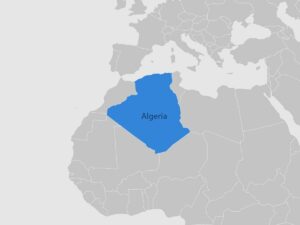












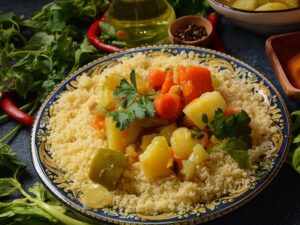
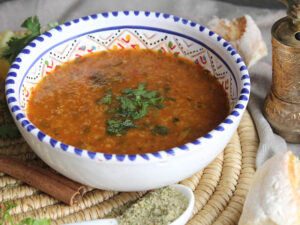
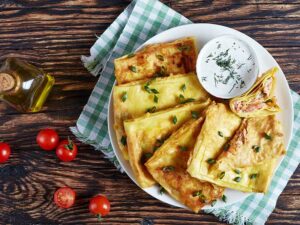
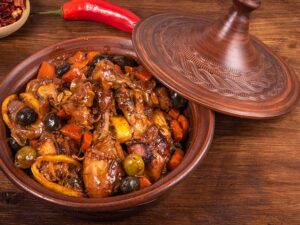
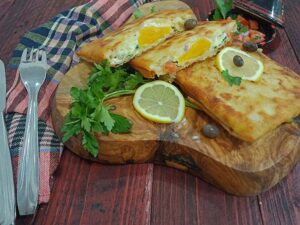
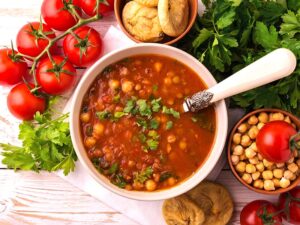
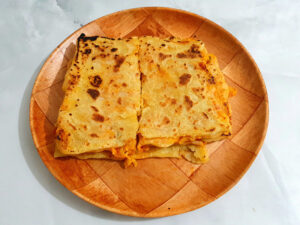

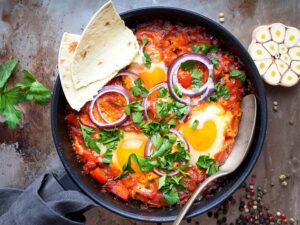
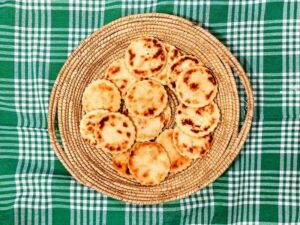
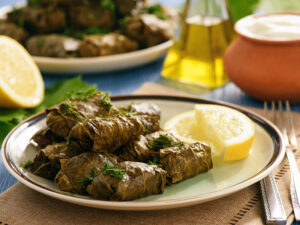
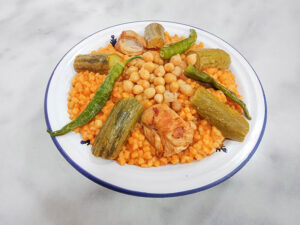
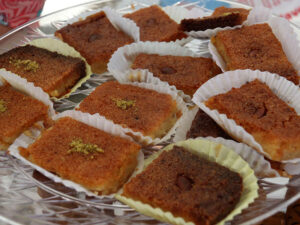
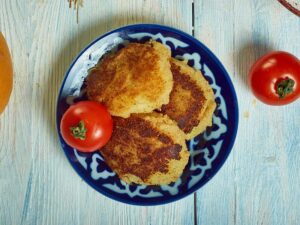
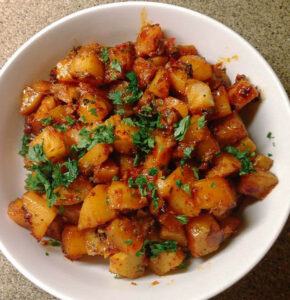
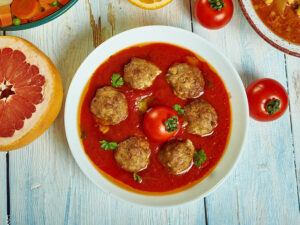
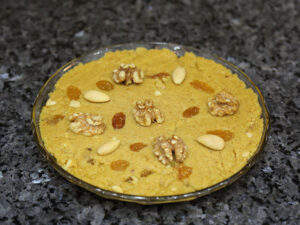
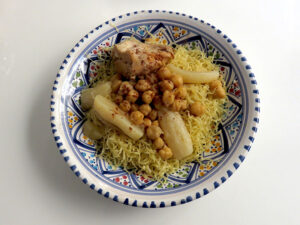
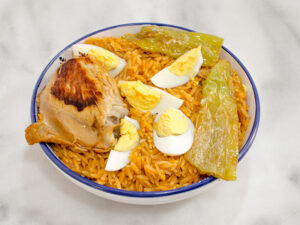
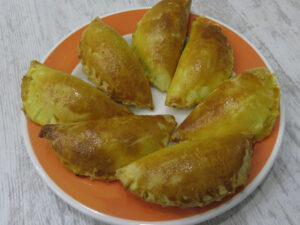
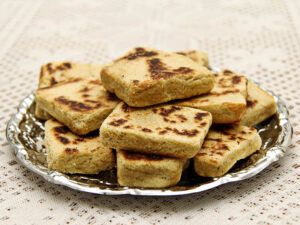
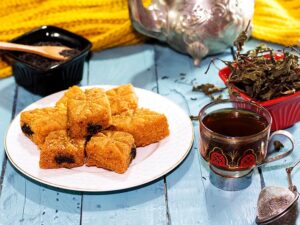
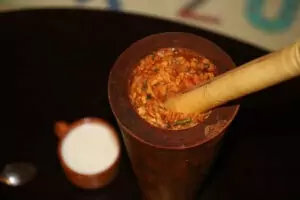
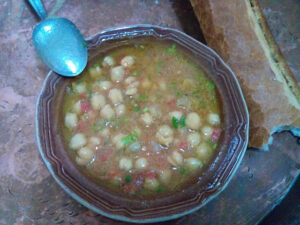
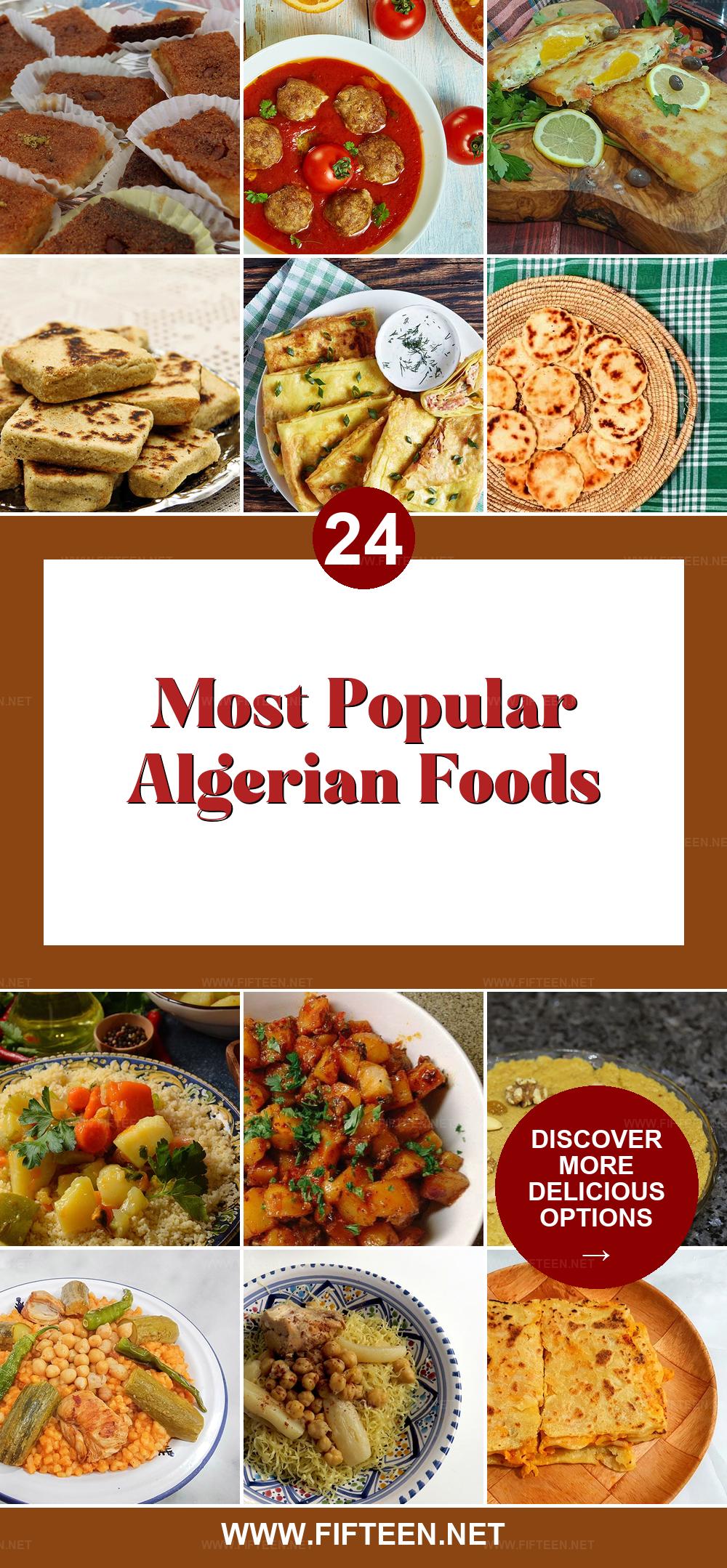
Jamie Scott
Editor in Chief, Senior Content Writer
Expertise
Home Cooking, Meal Planning, Recipe Development, Baking and Pastry, Food Editor, Cooking-video Maker, Western Food Evaluation Expert
Education
Le Cordon Bleu College of Culinary Arts
Local Community College, New York, NY
Jamie Scott is a skilled culinary expert and content creator specializing in Western cuisine. With over 15 years in the culinary field and formal training from Le Cordon Bleu, Paris, Jamie deeply understands how to blend nutrition with delicious flavors. His passion for cooking matches his commitment to making healthy eating accessible and enjoyable.
On Fifteen.net, Jamie brings a fresh perspective to classic dishes and beverages, offering readers insightful recipes, cooking tips, and a fresh view on meal planning that emphasizes taste, health, and simplicity.